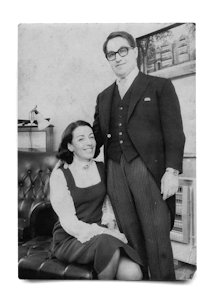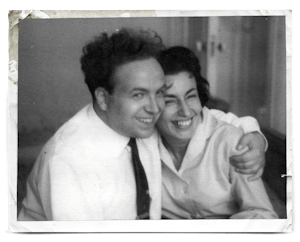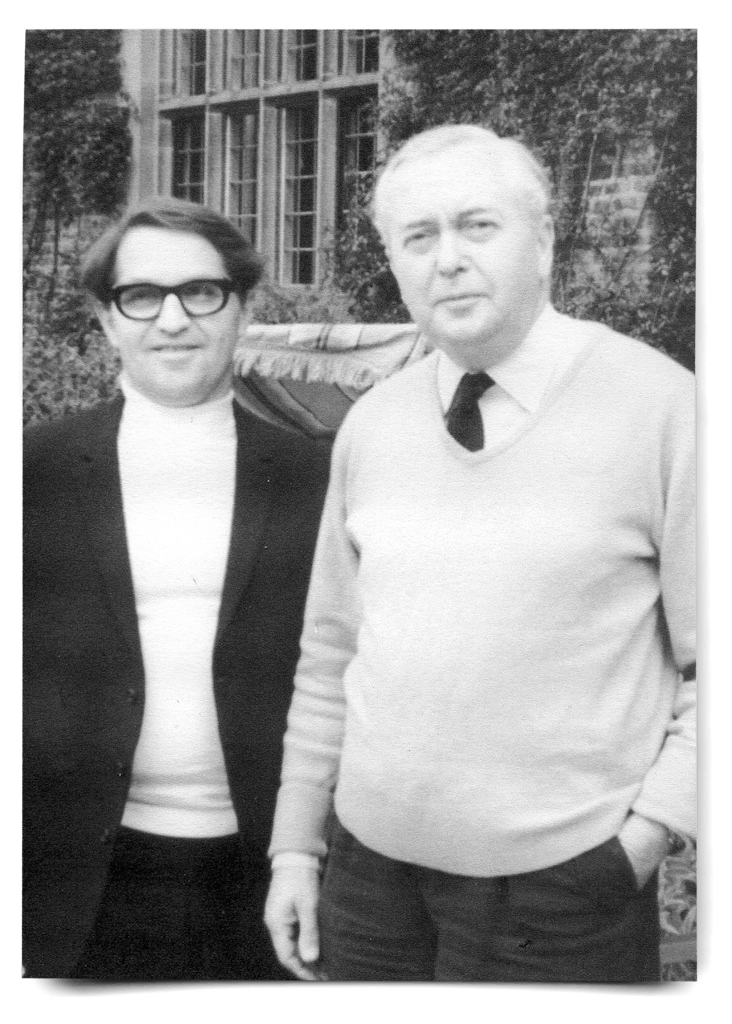Margaret Kagan
Margaret Kagan was born in Lithuania and was imprisoned in the Kaunas Ghetto. She survived the Holocaust in hiding before starting a new life in Britain.


Margaret Kagan was born in 1924 in Riga, but grew up in Kaunas, which was then the capital of Lithuania. She and her younger brother, Alik, were brought up by their parents to consider themselves ‘citizens of the world’ first and foremost. Margaret’s family was Jewish but assimilated into Lithuanian society and she didn’t remember experiencing antisemitism at school.
Lithuania was located between Nazi fascists to the West and Soviet Communists to the East. When the country was invaded by Germany in June 1941, many Jewish families fled. Margaret’s family chose to stay in Kaunas, as Alik was away at a summer camp and they didn’t want to leave without him. As soon as German troops arrived, Jewish citizens were arrested and shot, often with the collaboration of the Lithuanian police and civilians. Margaret’s father was arrested and never returned. She learned after the war that he had been murdered by Lithuanian collaborators during the Lieutūkis Garage Massacre, alongside dozens of other Jewish men and women.
On 15 August 1941, the Jewish population was forced to relocate into the Kaunas ghetto in the Vilijampole suburb of the city. For many, this was welcomed as they believed they would be safer. However, the conditions in the overcrowded ghetto were terrible, with whole families living in single rooms leading to unsanitary conditions and disease. They were given little food and were subjected to hard labour. Margaret described the years she spent in the ghetto as ‘dreadful’.



Margaret’s life changed when she met Joseph Kagan. He refused to accept the conditions of the ghetto and smuggled in luxuries, such as food and gramophone records, despite risking his life to do so. Joseph was convinced that the Jewish people were going to be killed so set about trying to find a place to hide. He convinced Margaret to marry him and to go into hiding with him and his mother. Just before they went into hiding, Margaret found a friend outside the ghetto to hide Alik.
“Joseph, unlike so many others who hoped against hope, was absolutely sure that we were going to be exterminated and, if we wanted to stay alive, we had to somehow get out of this hellish ghetto.”
Margaret, Joseph and his mother escaped the ghetto by sneaking away from a slave labour brigade to their hiding place in the attic of a local factory. From November 1943, they hid day and night in a 1.8m x 1.5m wooden crate in the attic of a local factory with the help of friends, including the German manager and a Lithuanian foreman, Vytautas Rinkevicius.
The Kagans tried to confine all activity to between 6pm and 6am. During the foundry’s working day, they read, quietly listened to the radio, and slept. Evenings were devoted to fetching water from a tap in the foundry, disposing of refuse, washing, cooking, and eating. Even these simple household chores could be unimaginably nerve-wracking experiences and potentially expose their presence.
In July 1944, as the Allies advanced, Margaret, Joseph and Mira left their hiding place and joined the family hiding Margaret’s brother until the arrival of the Soviet Red Army. They were liberated that month.
Margaret was euphoric at regaining her freedom and being reunited with Alik, however the enormity of what had happened quickly became apparent. She discovered the truth about her father’s disappearance and that her mother had committed suicide in a concentration camp.
Margaret and Joseph chose to create new lives in Britain as Joseph’s father already lived in England. Joseph and Margaret started their own business, Kagan Textiles. While building up the business, Joseph experimented in developing a fabric that would keep the wearer both dry and warm. In 1951, Joseph patented a new cloth, called Gannex, and manufactured coats which were famously worn by HRH Prince Philip and then Prime Minister Harold Wilson. The business developed into a major firm, eventually employing a thousand people. Joseph was knighted in 1970 for services to industry and Margaret became Lady Kagan. As well as working in the business, Margaret devoted her life to community work and raising their three children.






Margaret remained in contact with their rescuer, Vytautas Rinkevicius, and the family who had rescued Alik. They were reunited after twenty years, when Margaret travelled to Riga to meet them in 1964. Vytautas and his wife Elena, and Antanas and Marija Macenavičius (the family who saved Alik) were honoured as Righteous Among the Nations.
Throughout her life Margaret spoke about the dangers of prejudice and the immense bravery of those who had risked their lives to save people during the Holocaust:
“Why anyone of sound mind should have agreed not to endanger only himself, but his whole family – to risk his life, as he did for us – is an insoluble question.”
Margaret sadly died in 2011 and is greatly missed.
Can you help us?
Without the work of charities like ours, stories like Margaret Kagan's will be lost and forgotten. Please donate generously to ensure that Margaret's story can a force for good in the modern world.
- £
